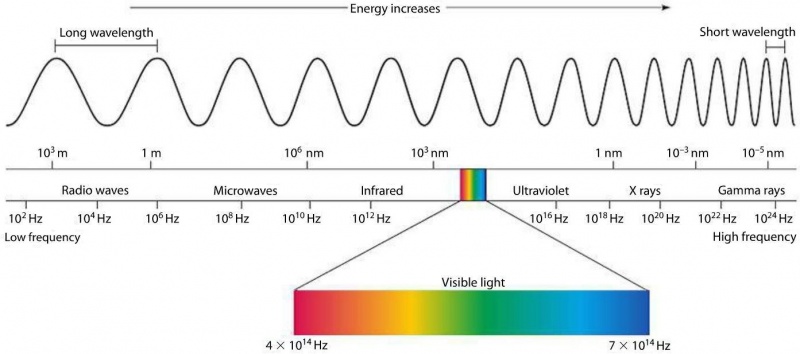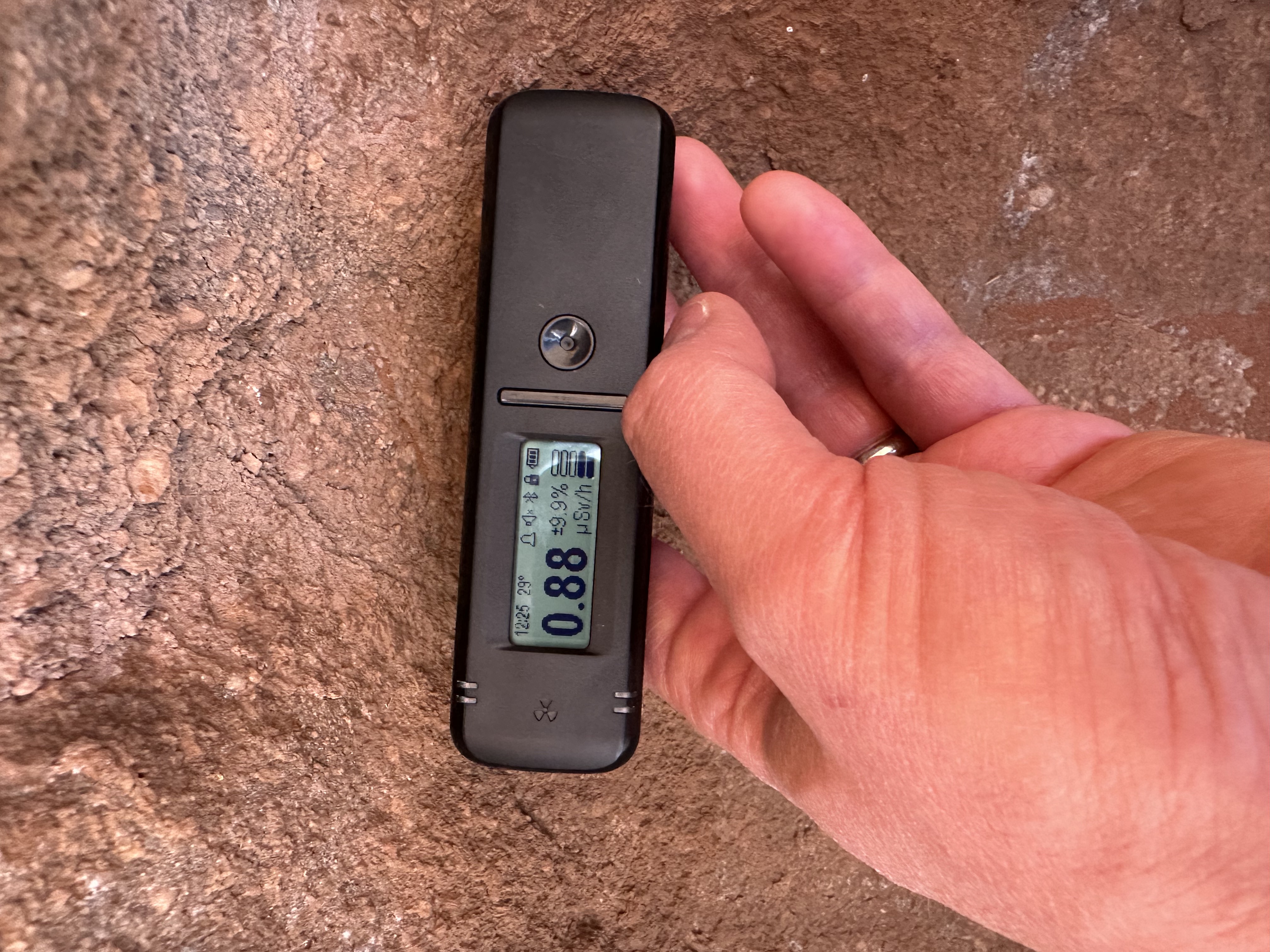Dialling it up to Yotta
This is going waaaaay above the HAM band, but the electromagnetic spectrum has lots of interesting areas (for example, my photography hobby sits right in the middle of that spectrum graph). Here we will talk about things in the YottaHz range. (This article was motivated by the front-page of the latest issue of DIYODE magazine which highlights a Geiger Counter build). Also shortly after originally posting this, Hackaday did two articles on the topic as well. This one on dosimetry and this one on a Geiger counter.
For years I've had a little Geiger counter hooked up to an Arduino pumping live data out there about background radiation that it's picking up in the yard. As the name suggests, it uses a Geiger–Müller tube to generate a charge whenever the tube is hit by ionising radiation. You can then count these events and correlate it with a dose.
Another way to accomplish the same thing is via a scintillation detector. This uses a crystal (instead of a tube) that is excited by ionising radiation and is coupled with a photo diode to generate a signal that can be read and analysed.
The benefit of a scintillation detector is that it's faster and also able to measure more aspects (like the energy level) of the particles. These types of detectors have typically been way too expensive for hobbyists to play with but the RadiaCode-101 by Scan Electronics just barely tucks into the price range for a "geek toy".
We recently took a trip through Outback Australia where I brought my HAM gear as well as the RadiaCode, as I suspected there would be some interesting rocks out there.
There are many ways to measure radiation, but I particularly like this Radiation Dose Chart which uses Sieverts. The chart is made by the group behind the nerd-famous XKCD cartoon series.
I made some intresting observations during the trip. Note that the background radiation in Sydney is generally around or below 0.20μSv/h.
- The highest dose we detected was on a walk around Uluru at 0.88μSv/h as you can see in the photo above.
- The lowest readings were near the Olympic Dam uranium mine and nearby town of Roxby Downs. They certainly seem to be making a huge effort to be really clean around one of the worlds largest uranium deposits
- The underground accommodation in Coober Pedy was at about the same background level as Sydney
- The flight from SYD-AYQ seems to have revealed something interesting as you gain altitude. Namely that on the ground you get the background radiation dose mostly given by the earth itself and then as you climb it goes down as you get further from the earth and then goes back up as you get more exposed to the cosmic radiation. The chart at the right shows this detal. The Y axis denotes time (with the top being the start of the series) and the X axis shows the intensity of the radiation by energy level. The little cluster at the top left is the "ground background." Then as you take off and climb the levels drop as you get further from the ground and as you continue to climb you get more exposure to the cosmic radiation which has a thinner atmosphere to block it.
What makes the Radiacode more fun to use than a standard Geiger counter is the Bluetooth link with a smartphone and the resulting additional tracking/analysis you can do. Although the manufacturer still hasn't released an iOS verion of their app, Max Nasonov has made one that works quite well. He's in the process of creating a type of geographic social network of radiation detectors where people can share tracks like this. You can join the iOS beta by reaching out to Max directly on Telegram. I have no commercial link with Max or the company that makes Radiacode, I just think it's a neat piece of tech gear that fits nicely in my HAM travel kit.
Posted: 31-Oct-2022, Updated: 10-Nov-2022


